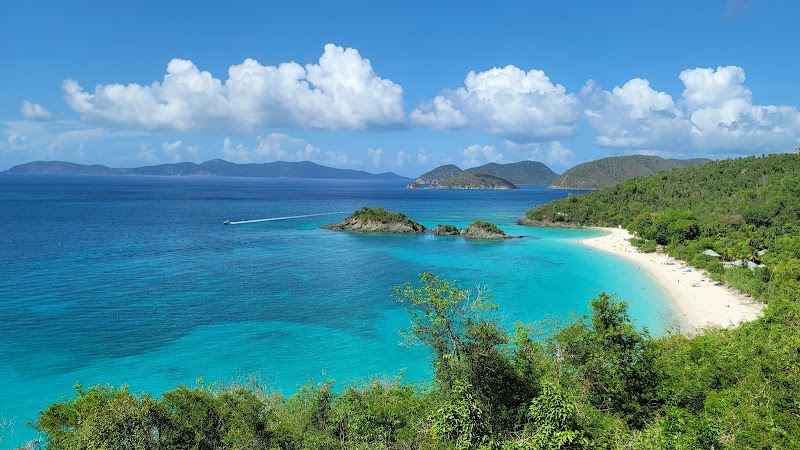Top Kayaking Routes in the Virgin Islands: Navigating St. John’s Coastal Gems
Explore St. John’s coast by kayak, where turquoise waters meet rugged shorelines and quiet coves. This guide highlights top routes blending manageable challenges with stunning marine life and history, perfect for paddlers seeking vibrant adventure on the Virgin Islands’ waters.
Plan Around Tides and Winds
Check local tide charts and wind forecasts; the Virgin Islands waters can shift quickly, impacting paddling conditions and currents.
Use a Dry Bag for Essentials
Protect electronics, snacks, and extra clothing in a waterproof dry bag to keep your gear safe from spray and unexpected splashes.
Wear Appropriate Footwear
Neoprene booties or sturdy water shoes protect your feet from rocky shorelines and coral when launching or landing your kayak.
Start Early to Avoid Afternoon Winds
Mornings tend to offer calmer seas and lighter winds, perfect for smooth paddling and better wildlife sightings.
Top Kayaking Routes in the Virgin Islands: Navigating St. John’s Coastal Gems
The Virgin Islands pulse with clear waters and rugged shorelines that call for exploration by kayak. St. John, a vibrant hub for paddlers, offers coastal routes where the sea invites you to engage directly, its currents shaping your journey. These routes thread through sheltered bays, coral reefs, and cliffs that have quietly held centuries of stories. Whether you’re new to the sport or a seasoned paddler, St. John’s coastal gems provide both challenge and calm in balanced measure.
Begin your expedition at Cinnamon Bay, where the water plays a steady rhythm against the shore. This sheltered bay offers a 3-mile loop around the northern coast, weaving past Hawksnest Bay and onto Trunk Bay. Expect clear, shallow waters perfect for spotting tropical fish daring you closer. The terrain under your paddle changes—smooth sand giving way to rocky outcrops where seabirds keep watch. Paddling this route takes roughly 2 to 3 hours, depending on your pace and stops.
For a longer stretch, the east shore beckons with the Salt Pond Bay route. Here, currents push forward more decisively along a 5-mile path. This route tests your stamina but rewards with quiet coves and sandy beaches fringed by whispering mangroves. These mangroves are more than scenery; their roots resist the waves, holding the coast fast and offering shelter to vibrant marine life. Bring good hydration and plan your timing with the tide to prevent fighting strong headwinds.
If you’re after a blend of cultural history and natural beauty, chart a course toward Waterlemon Cay. At about 4 miles round-trip, this route threads through calm channels to a snorkel hotspot. The cay’s coral reefs guard their territory with surprising resilience. Kayakers must respect the fragile ecosystem, steering clear of direct reef contact. Early mornings offer glassy waters and the chance to see rays gliding beneath your craft.
Practical notes: plan your route carefully and check weather and tide charts before setting out—winds can shift abruptly around the island’s exposed edges. Footwear matters; neoprene booties protect feet in shallows and rocky launches. A dry bag is essential for safeguarding water, snacks, and phone against unexpected spray. Start early to make the most of calm seas and less crowded bays.
Ultimately, St. John’s waters are fiercely themselves—they demand respect and reward attentiveness. Each paddle stroke becomes a conversation with the sea, a way to navigate the island’s hidden coral caves and sunlit sands. Adventure waits just beyond the shoreline, practical and vivid, inviting paddlers to experience a balance of challenge, discovery, and immersion in a coastal world alive with motion and life.
Nearby Trips
All Adventures
Boat Charters
Water Activities
Adventures near Cruz Bay
Discover the unique and memorable adventures that make Cruz Bay special.
Frequently Asked Questions
Are kayak rentals widely available on St. John?
Yes, Cruz Bay offers several kayak rental companies catering to all levels. Booking in advance during peak seasons is recommended to secure your preferred equipment.
Can beginners safely navigate these routes?
Most routes suit intermediate paddlers, but calm bays like Cinnamon Bay are beginner-friendly. It’s advised to start with shorter paddles and avoid windy or high-current days.
What marine life can I expect during the paddle?
Expect to see parrotfish, sea turtles, rays, and occasionally nurse sharks in shallow reefs. Birds including herons and frigatebirds often perch along the shoreline.
Are there any protected areas to be aware of?
Yes, Virgin Islands National Park governs much of St. John’s coastline, including designated marine protected zones around islands and reefs where anchoring and fishing are restricted.
What is the best way to get around St. John if I don’t have a car?
Taxis and jitneys run regularly from Cruz Bay, but many paddlers prefer to rent bikes or scooters for flexible access to launch points and beaches.
Is it possible to combine kayaking with snorkeling?
Absolutely. Routes like Waterlemon Cay provide easy kayak access to prime snorkel spots, allowing you to explore reefs and marine life directly from your kayak.
Recommended Gear
Lightweight Kayak
A stable, seaworthy kayak suitable for coastal waters improves maneuverability and enhances safety on varying terrains.
Personal Flotation Device (PFD)
Wearing a properly fitted PFD is mandatory to stay safe, especially around strong currents and open water sections.
Neoprene Booties
Protect your feet during launches and landings on rocky or coral-strewn edges and provide warmth if water temperatures drop.
Waterproof Dry Bag
Keep your valuables, snacks, and electronics safe from water exposure during paddling and unexpected spray.
Local Insights
Hidden Gems
- "Secret sand coves off Salt Pond Bay reachable only by kayak"
- "Small rocky alcoves near Waterlemon Cay that often host sleeping sea turtles"
Wildlife
- "Brown pelicans and magnanimous frigatebirds soaring overhead"
- "Endangered Hawksbill turtles frequenting coral reef edges"
History
"St. John’s shores hold traces of colonial sugar plantations turned ruins, many visible when paddling along the shoreline near Cinnamon Bay, adding historical depth to natural exploration."
